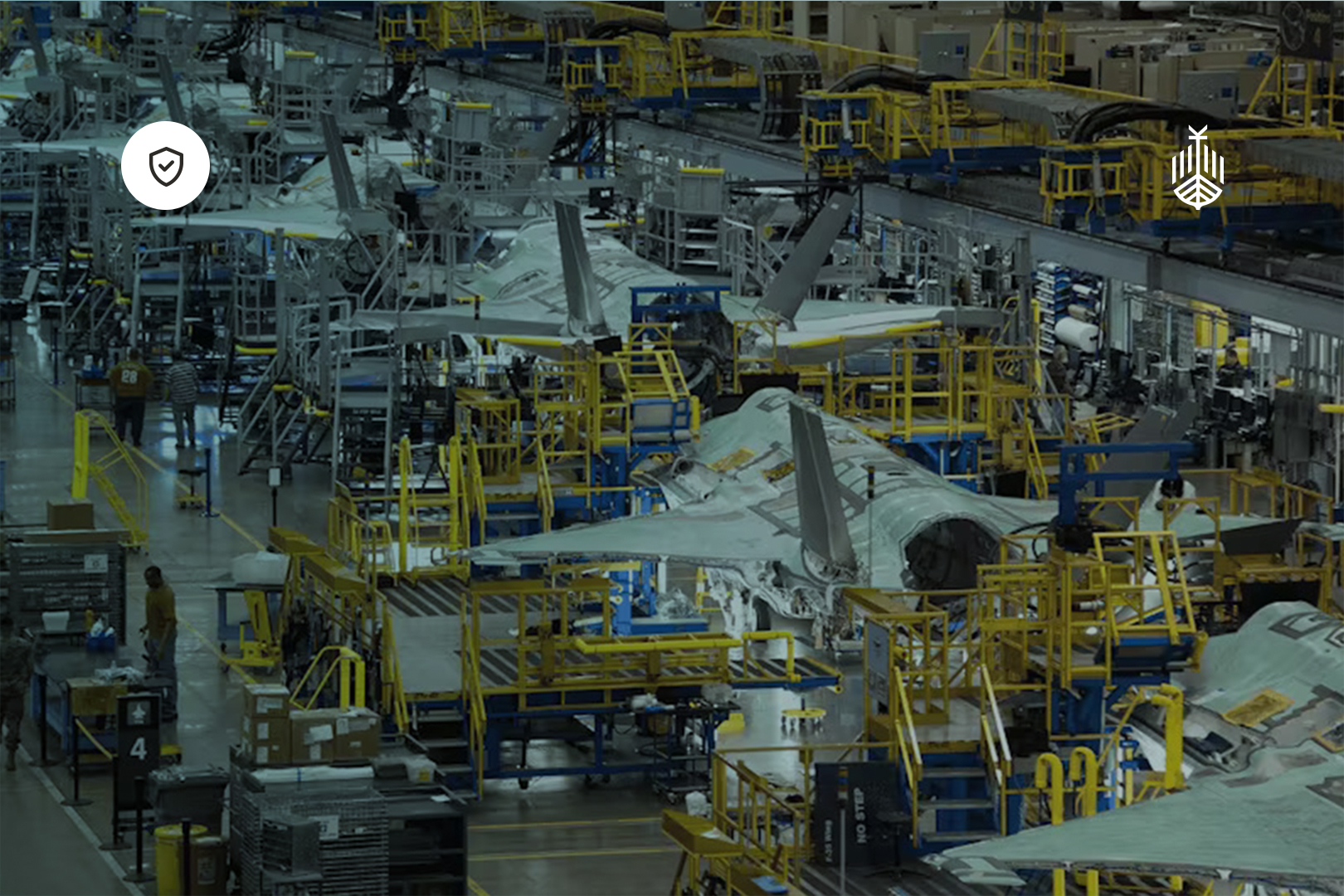Introduction
With the war in Ukraine now over a year old, and no clear resolution seeming imminent, disruptions to the global energy market are putting governments worldwide under increasing pressure and East-West relations appear at their lowest ebb since the Cold War.
From this, however, we are also seeing significant new developments in modern weaponry and advanced technologies which are shifting traditional warfare by utilising the most sophisticated defensive weapons.
NATO is at the forefront of this change, applying innovation to warfare development efforts in order to deliver better and faster operational capabilities and greater resilience in how its member nations get tech to troops at speed.
At the recent DASA hosted workshop at Defence BattleLab in Dorset, we learned how NATO’s new Defence Innovation Accelerator for the North Atlantic (DIANA) innovation investment initiative will be rolled out in 2023 and beyond.
We gained vital new information on the “emergent disruptive technologies” that NATO is focused on investing in; from quantum computing and AI, to synthetic biology and energy storage, NATO is making strategic investments to drive innovation and secure its member states' interests.
Whether you're an industry professional or simply curious about the future, this article provides insight into the technologies shaping our world and the role NATO is playing in this rapidly evolving landscape.

1. Quantum technology
Quantum technology refers to a range of cutting-edge technologies that are based on the principles of quantum mechanics, a field of physics that describes the behaviour of matter and energy at the smallest scales. Quantum technology encompasses a variety of areas such as quantum computing, quantum cryptography, quantum simulation, and quantum sensing, among others. The goal of quantum technology is to harness the strange and powerful properties of quantum systems for practical applications and to solve problems that are beyond the reach of classical technology.

How quantum technology can be used in Defence & Security
Quantum Cryptography
Quantum cryptography enables secure communication by using the properties of quantum mechanics to encode messages in a way that makes them secure from eavesdropping. This can be used to secure communication between military units or to protect sensitive information.
Quantum Sensors
Quantum sensors can be used to detect changes in physical quantities, such as position, orientation, or temperature, with unprecedented precision. This can be used for navigation, surveillance, or target tracking.
Quantum Computing
Quantum computing has the potential to solve problems that are currently intractable for classical computers, such as simulating complex systems or breaking codes. This can be used for optimising military operations, developing new materials, or cracking encrypted codes.
Quantum Simulation
Quantum simulation enables the modelling of complex quantum systems, such as molecules or materials, on a computer. This can be used for designing new materials for military applications, such as lightweight armour, or for simulating nuclear reactions.
Quantum Imaging
Quantum imaging can be used to detect and image objects with high sensitivity, even in difficult conditions, such as low light or high clutter. This can be used for surveillance, reconnaissance, or target tracking.
2. Artificial Intelligence
Artificial Intelligence (AI) is a field of computer science that focuses on the development of intelligent machines that can perform tasks that typically require human intelligence, such as visual perception, speech recognition, decision-making, and language translation. AI systems use algorithms and statistical models to enable computers to perform tasks that were previously only possible for humans to do.

How AI can be used in Defence & Security
Surveillance & Threat Detection
AI algorithms can analyse video and audio feeds from cameras, drones, and other sources to detect potential threats, such as weapons, and to track individuals or vehicles of interest.
Border Security
AI algorithms can be used to analyse images and video captured at borders to detect potential illegal activity, such as smuggling of illegal immigration.
Cybersecurity
AI algorithms can be used to detect and prevent cyber attacks, such as hacking or malware, by analysing network traffic and identifying unusual behaviour.
Autonomous Weapons Systems
AI algorithms can be used to control autonomous weapons systems, such as unmanned aerial vehicles, to conduct reconnaissance, surveillance, and targeted strikes.
Logistics & Supply Chain Optimisation
AI algorithms can be used to optimise logistics and supply chain operations, such as predicting demand for specific supplies, to support military operations.
Decision-Making Support
AI algorithms can assist military leaders in decision-making by providing real-time analysis of large amounts of data from a variety of sources, such as satellite images, weather forecasts, and social media.
Predictive Maintenance
AI algorithms can be used to predict when military equipment, such as aircraft or vehicles, is likely to need maintenance, enabling proactive repairs and reducing downtime.
3. Synthetic biology
Synthetic Biology is a field of biology that combines engineering principles and biological systems to design and construct new biological parts, devices, and systems that do not exist in nature. The goal of synthetic biology is to develop a new generation of biological tools and technologies that can be used for a wide range of applications, such as producing biofuels, creating new medicines, or improving crop yields.
In synthetic biology, biological parts, such as genes, proteins, or cells, are engineered or synthesised to perform specific functions. These parts are combined to create new biological systems, such as metabolic pathways, biosensors, or bioreactors. The design and construction of these new biological systems is guided by engineering principles, such as modularity, standardisation, and automation.

How synthetic biology can be used in Defence & Security
Bio-sensors
Synthetic biology can be used to develop biosensors that can detect chemical or biological agents, such as toxins or pathogens, with high sensitivity and specificity. These sensors could be used for early warning of chemical or biological attacks, or to detect the presence of harmful substances in the environment.
Bioremediation
Synthetic biology can be used to develop organisms that can clean up environmental contaminants, such as oil spills or toxic chemicals. These organisms could be used to remediate contaminated sites, such as military bases or weapon storage facilities.
Bio-protection
Synthetic biology can be used to develop organisms that can protect against environmental threats, such as extreme temperatures or radiation. These organisms could be used to protect military personnel or equipment in harsh environments.
Bio-materials
Synthetic biology can be used to develop new biomaterials, such as stronger, lighter, and more durable materials, that can be used for military applications, such as armour or equipment.
Biowarfare Defence
Synthetic biology can be used to develop countermeasures against biowarfare agents, such as vaccines, antivirals, or antibiotics. These countermeasures could be used to protect military personnel and civilians against bioweapons.
Synthetic organisms
Synthetic biology can be used to create new organisms that have specific functions, such as producing biofuels or synthesising chemicals. These organisms could be used for military applications, such as powering vehicles or generating energy in remote locations.
4. Energy resilience
Energy resilience refers to the ability of a system, such as a community, an economy, or a critical infrastructure, to maintain its essential functions in the face of disruptions or disturbances to its energy supply. This includes the ability to withstand and recover from events such as power outages, fuel shortages, extreme weather conditions, cyberattacks, or other disruptions to the energy system.
Energy resilience encompasses not only the physical components of the energy system, such as power plants and transmission lines, but also the social, economic, and institutional factors that influence how energy is produced, distributed, and used. A resilient energy system must be able to adapt to changing conditions, minimise the impact of disruptions, and quickly recover from any disruptions that do occur.

How energy resilience is leveraged in Defence & Security
Within military bases
Military bases often have unique energy needs, including large-scale electricity generation, transportation fuels, and other energy-intensive operations. Ensuring energy resilience at military bases helps ensure the readiness and capability of military forces.
Critical infrastructure protection
Energy resilience is important for protecting critical infrastructure, such as airports, ports, and water treatment plants, which are essential for national security and the functioning of society.
Disaster response
In the event of a natural disaster or other emergency, energy resilience is critical for ensuring the ability of emergency response teams to access and transport essential supplies, including food, water, and medical equipment.
Cybersecurity
The energy sector is increasingly vulnerable to cyberattacks, which can disrupt energy supplies and compromise national security. Energy resilience efforts aim to reduce the risk of these attacks and ensure the ability to recover quickly in the event of a successful attack.
Emergency preparedness
Energy resilience is critical for ensuring the readiness of emergency responders and the ability of communities to respond to and recover from disasters and other emergencies.
5. Secure info sharing
Secure information sharing refers to the process of exchanging sensitive or confidential information between individuals, organisations, or systems, in a manner that ensures the confidentiality, integrity, and availability of the information. This involves implementing technical and organisational measures to protect the information from unauthorised access, theft, loss, or manipulation, while also ensuring that authorised users have the necessary access to the information when needed.
Secure information sharing is a critical component of many defence and security operations, where the timely and accurate exchange of information is essential to make informed decisions, respond to threats, and protect national security. To achieve secure information sharing, organisations must implement strong security controls, including encryption, access controls, and data loss prevention measures, and establish effective policies and procedures for information sharing.

How secure info sharing is leveraged in Defence & Security
Intelligence sharing
Intelligence agencies exchange information to identify and respond to threats, such as terrorism, cyber attacks, and organised crime. Secure information sharing enables intelligence agencies to collaborate and share information in real-time to support investigations and operations.
Inter-agency collaboration
Different government agencies, such as law enforcement, military, and intelligence agencies, exchange information to support joint operations and decision-making. Secure information sharing enables agencies to share information while protecting sensitive or confidential information.
Joint military operations
During military operations, different branches of the military and allied forces exchange information to coordinate their activities and respond to threats. Secure information sharing helps to ensure that sensitive information is protected and that authorised personnel have access to the information they need to support operations.
Emergency response
During emergency response operations, such as natural disasters or man-made crises, different agencies exchange information to coordinate their response efforts. Secure information sharing enables agencies to exchange information in real-time, while protecting sensitive information.
Cybersecurity
The defence and security industry is a prime target for cyber attacks, and secure information sharing is critical for protecting sensitive information and responding to cyber threats. Secure information sharing enables organisations to share information about cyber threats, vulnerabilities, and mitigation strategies to help protect against attacks.
Conclusion
At Karve International we're on a mission to revolutionise the way disruptive companies work with the Government, ensuring the best technologies reach the people that need them most.
If you’re a company developing technologies within one or more of the above fields and would like to learn how we can accelerate your success as a strategic growth partner, then please get in touch: info@karveinternational.com.














